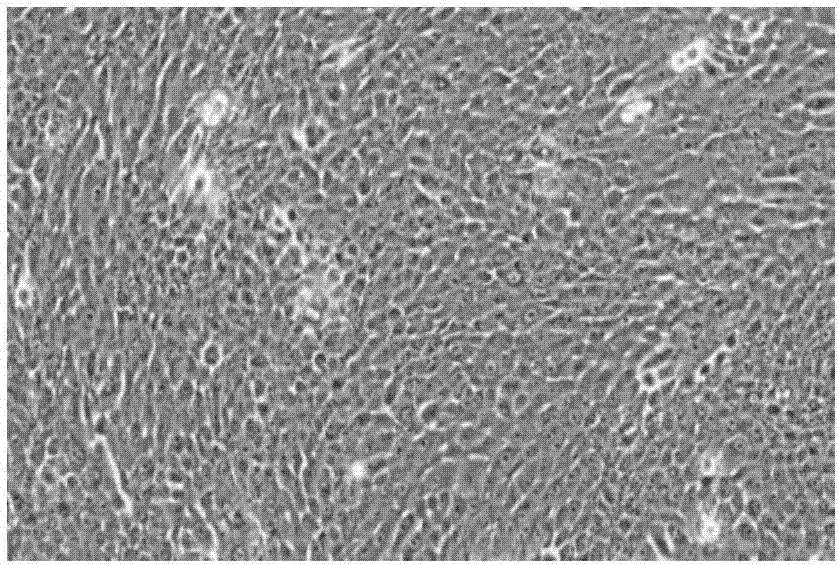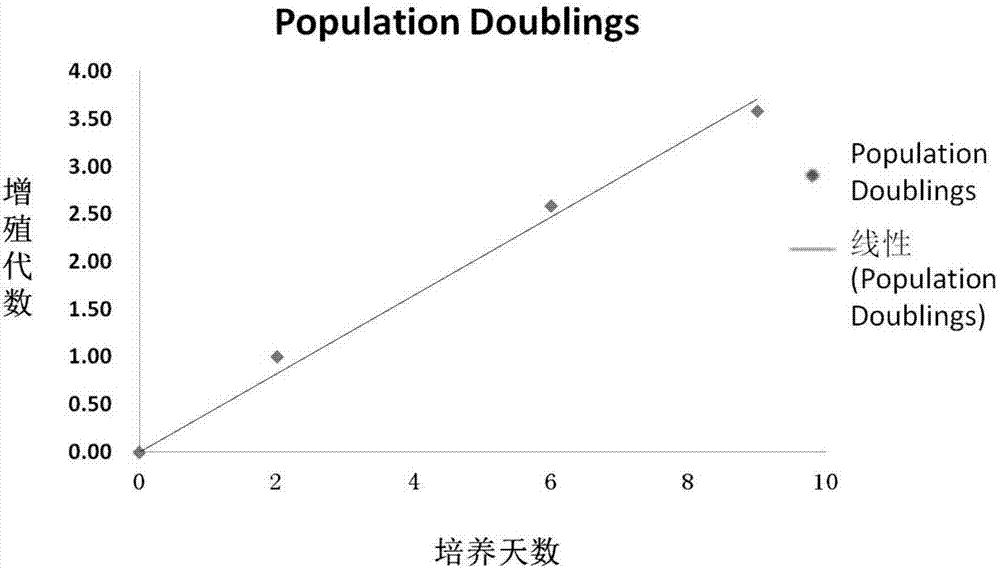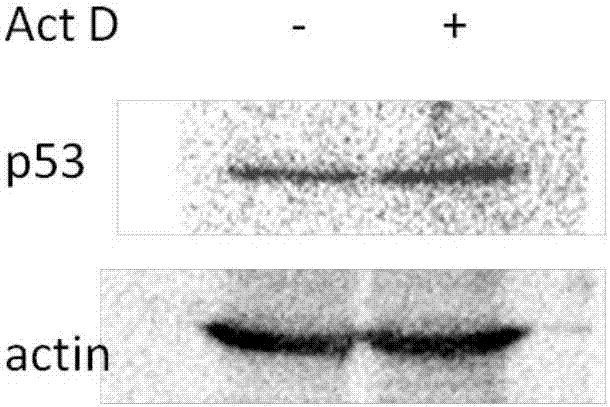RNCEC (rabbit normal corneal epithelial cells) and application thereof
A corneal epithelial cell, normal technology, applied in the field of cell biology, can solve the problems of not being able to be passed down, killing experimental animals, etc.
- Summary
- Abstract
- Description
- Claims
- Application Information
AI Technical Summary
Problems solved by technology
Method used
Image
Examples
Embodiment 1
[0049] [Example 1] Primary isolation and culture method of rabbit normal corneal epithelial cells
[0050] 1) Strictly follow the animal experiment procedures and regulations of ARRIVE (Animal Research: Reporting of In Vivo Experiments), and collect normal rabbit corneal samples;
[0051] 2) Preparation of digestion solution: HL medium containing 0.2 mg / mL of collagenase and dispase; among them, HL medium is: DMEM (GIBCO # 11965-092) and serum-free medium SFM (GIBCO # 10744-019 ) were mixed at a volume ratio of 1 : 3, and 5% (v / v) fetal bovine serum was added, as well as 0.4 μg / mL cortisol (hydrocortisone), 5 μg / mL insulin (insulin), and 8.4 ng / mL cholera toxin ( cholera toxin), 10 ng / mL epithelial growth factor (EGF), 24 μg / mL adenine, 100 U / mL penicillin, 100 μg / mL streptomycin, 0.25 μg / mL amphotericin B (Fungizone), 30 μM Fasudil (Fasudil), the above medium needs to be filtered through a 0.22 μm pore size filter).
[0052] 3) Wash the isolated fresh tissue once with 95-10...
Embodiment 2
[0061] [Example 2] Subculture method of rabbit normal corneal epithelial cells RNCEC / HL-032
[0062] 1) When the rabbit normal corneal epithelial cells proliferate to 70-90% abundance, wash the cells twice with 1xPBS, and digest the monolayer cells with 0.05% trypsin / EDTA for 2-5 minutes.
[0063] 2) 10ml of complete DMEM to neutralize the digestion reaction.
[0064] 3) Centrifuge at 1000rmp for 5 minutes to remove the supernatant.
[0065] 4) At a ratio of 1:2, as long as the cells can adhere to the wall and grow normally), resuspend the cell pellet in 10ml of the medium in Example 1 for inoculation.
[0066] 5) If necessary, the 1x10 6 Corneal epithelial cells were resuspended in 1-2ml of cell freezing medium (90% fetal bovine serum and 10% DMSO), and stored in liquid nitrogen for future use.
[0067] Rabbit normal corneal epithelial cells subcultured according to the above method, the growth curve is as follows: figure 2 , the cells maintain a steady state of prolifer...
Embodiment 3
[0068] [Example 3] DNA damage response experiment of rabbit normal corneal epithelial cells RNCEC / HL-032
[0069] 1) Normal rabbit corneal epithelial cells were digested with 0.05% trypsin, prepared into a single cell suspension, inoculated into a 6-well plate, 1x10 per well 6 cells at 37°C, 5% CO 2 Incubator cultivation.
[0070] 2) Add 10 μM actinomycin D (Act D), at 37°C, 5% CO 2 Incubator for 24 hours.
[0071] 3) Cells were collected, lysed with 200 μl RIPA lysate on ice for 30 minutes, centrifuged at 12000 rpm at 4°C for 30 minutes, and the supernatant was collected.
[0072] 4) Perform western blot detection on the collected protein samples.
[0073] The result is as image 3 As shown, after the normal rabbit corneal epithelial cells were treated with Act D, the expression of p53 protein was up-regulated, indicating that the cells had a normal response ability to DNA damage.
PUM
 Login to View More
Login to View More Abstract
Description
Claims
Application Information
 Login to View More
Login to View More - R&D
- Intellectual Property
- Life Sciences
- Materials
- Tech Scout
- Unparalleled Data Quality
- Higher Quality Content
- 60% Fewer Hallucinations
Browse by: Latest US Patents, China's latest patents, Technical Efficacy Thesaurus, Application Domain, Technology Topic, Popular Technical Reports.
© 2025 PatSnap. All rights reserved.Legal|Privacy policy|Modern Slavery Act Transparency Statement|Sitemap|About US| Contact US: help@patsnap.com



